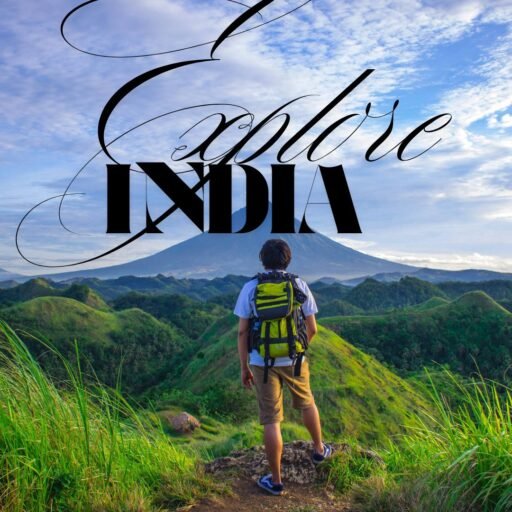Jharkhand is a state full of stories, culture, minerals, and natural beauty. Many people know it for its forests and tribes, but there is much more hiding behind hills and rivers. Kids, students, and grown-ups can all learn something fresh when they look closely at this land.
People from other parts of India often think Jharkhand is only about coal mines. In reality, the region carries deep history, unique customs, and colorful wildlife. This blog explains everything in a simple and easy way so even a sixth-grade student can understand it without any trouble.
Amazing Facts About Jharkhand
The name “Jharkhand” comes from two words: Jhar (forest) and Khand (land). It means “land of forests,” and the name matches its real look. The state was created on 15 November 2000, after separating from Bihar. This step gave the tribal communities of the region their own identity.
Now here is the first use of the focus keyword in the body: Many children search online to learn facts about Jharkhand, and they are surprised by its variety. The state is not small, but it manages to keep nature and people close together.
Location and Landscape
Jharkhand sits in eastern India and touches Bihar, Odisha, West Bengal, Uttar Pradesh, and Chhattisgarh. Its center lies on the Chota Nagpur Plateau. That highland creates waterfalls, hills, and caves.
The land has red soil, black soil, and sandy soil in different zones. Rivers like Subarnarekha, Damodar, Koel, and Kharkai flow through it. These rivers feed lakes, fields, and forests in every season.
Forests and Biodiversity
About one-third of the state is covered by forests. Sal, bamboo, neem, teak, and mahua grow widely. The air is clean and rich in oxygen because trees stand close together.

Wildlife includes elephants, tigers, deer, leopards, bears, hyenas, and many birds. Betla National Park and Dalma Wildlife Sanctuary attract tourists and students who love nature.
Tribes and Local People
Tribal groups like Santhal, Munda, Oraon, Ho, and Kharia are major communities. They keep old music, dance, and language alive even today. Their folk art and customs tell stories of bravery, farming, and forest life.
These tribes celebrate festivals in a fun and respectful way. They wear bright clothes, use drums, and cook traditional food. Many young people also work in cities but stay connected to their villages.
Traditional Festivals
Sarhul is one of the oldest spring festivals. People worship trees and thank nature for its gifts. They dance in groups and decorate houses with flowers.
Karma is also famous in the state. Men and women hold the branches of a tree and pray for good crops. Drums and folk songs keep the energy high during the celebration.
Mineral Rich State
Jharkhand holds almost 40% of India’s mineral wealth. Coal, iron ore, copper, bauxite, and mica come from its land. The Damodar Valley has helped India grow steel and power plants.
Industrial cities like Jamshedpur and Bokaro built strong bases for steel production. Tata Steel started its journey here and changed the identity of the region forever.
Languages and Communication
Hindi is the official language, but people speak Nagpuri, Khortha, Mundari, Ho, and Santhali. English is used in offices and schools in urban areas.
These languages keep local identity alive. Kids learn mother tongues at home and Hindi or English in classrooms, so they become bilingual easily.
Education and Learning
Jharkhand has many government and private schools. Ranchi, Dhanbad, Jamshedpur, and Hazaribagh have popular colleges and universities. Indian School of Mines in Dhanbad is known across India.
In rural areas, schools are growing slowly. The state promotes mid-day meals and free uniforms to send more children to school.
Food and Lifestyle
Rice is the main food, supported by seasonal vegetables. Theccha, Pittha, Dhuska, Litti, and bamboo shoots are eaten in villages and cities. People cook with less oil and enjoy local spices.

Families like simple living. They respect guests, elders, and animals. Many homes still use clay ovens or hand-made stoves for cooking.
Tourism and Travel Spots
Ranchi is the capital and home to waterfalls like Hundru, Dassam, Jonha, and Hirni. Patratu Valley offers smooth roads and mountain views.
Netarhat is called the “Queen of Chota Nagpur” because of its sunrise and sunset points. Deoghar, Parasnath, Itkhori, and Maluti attract thousands of pilgrims every year.
Climate and Seasons
Jharkhand has three main seasons: summer, monsoon, and winter. Summer can be hot in cities but cooler on plateaus. Monsoon starts in June and ends in September with good rainfall.
Winter is pleasant and often cold at night. December and January bring fog and thick sweaters to many towns.
Wildlife Reserves Table
Below is a long table that gives clear details about major wildlife reserves in Jharkhand:
| Wildlife Reserve / Park | Main Animals Found | District | Special Feature | Best Time to Visit |
| Betla National Park | Elephants, deer, tigers | Latehar | One of first tiger reserves in India | Oct – Mar |
| Dalma Sanctuary | Elephants, leopards | East Singhbhum | Hills, trekking trails | Nov – Feb |
| Hazaribagh Wildlife Park | Deer, hyenas, jackals | Hazaribagh | Hilly region with grasslands | Oct – Jan |
| Palamu Tiger Reserve | Tigers, bears, bison | Latehar | Oldest tiger reserve after Jim Corbett | Nov – Mar |
| Lawalong Wildlife Sanctuary | Wolves, foxes, deer | Chatra | Dense jungle areas | Oct – Mar |
| Gautam Buddha Sanctuary | Leopards, reptiles | Chatra/Hazaribagh | Hilly terrain and greenery | Nov – Feb |
| Udhwa Bird Sanctuary | Migratory birds | Sahibganj | Only bird sanctuary in state | Nov – Feb |
| Koderma Sanctuary | Deer, foxes, birds | Koderma | Forest cover with temples nearby | Oct – Feb |
| Parasnath Forest | Birds, reptiles | Giridih | Jain pilgrimage site | Oct – Mar |
| Topchanchi Wildlife Area | Birds, monkeys, deer | Dhanbad | Lake and forest blend | Nov – Feb |
Historical Roots
Before becoming a state, this land was under the rule of many kings and empires. Tribal rulers protected forests and fields with strong loyalty. British rule brought change in mining and administration.

Freedom fighters like Birsa Munda fought against British policies. His efforts became symbols of pride and courage in the region.
Economy and Occupation
Mining, farming, small industries, and services form the backbone. Many farmers grow rice, wheat, maize, and pulses. People also work in dairy, fishing, and poultry.
Cities offer jobs in factories, transport, and IT centers. Young adults travel to other states for jobs but often return during festivals.
Culture and Art
Folk dances like Chhau, Paika, and Jhumar are part of celebrations. Drums, flutes, and traditional instruments fill the air with rhythm.
Handicrafts use bamboo, wood, and metals. Painted pottery and tribal jewelry are sold in local markets and fairs.
Sports and Personalities
Ranchi is the hometown of famous cricketer M. S. Dhoni. His success brought attention to sports training and stadiums in the state.
Archers, sprinters, and hockey players come from tribal belts. They get support from academies and government schemes.
Urban Development
Ranchi, Jamshedpur, Dhanbad, Bokaro, and Hazaribagh are major cities. Roads, hospitals, malls, and coaching centers are growing quickly.

Metro-style planning is improving transport, housing, and sanitation. Yet, the state tries to keep nature safe around new areas.
Tourism Growth
Tourists now explore caves, lakes, dams, and temples spread across the land. Ropeways, viewpoints, and eco-parks are developed for safe visits.
Many visitors search online for facts about Jharkhand before planning a trip. They soon find that the place offers peace and adventure together.
Youth and Future Plans
Education drives, digital literacy, and self-help groups help local youth. Skill training centers prepare students for jobs in technology, crafts, and hospitality.
Government schemes help farmers, business owners, and artists expand their work. Many people read facts about Jharkhand on websites and find chances to invest or study.
Hidden Natural Beauty
Waterfalls, rocky hills, and green valleys still remain untouched in some districts. Hikers and photographers discover new spots without disturbing nature.
Journalists and bloggers collect facts about Jharkhand and share them with school children and travelers. This builds curiosity about the region’s hidden corners.
Farmers and Village Life
Villages grow fruits, pulses, and vegetables. Women join self-help groups to sell pickles, baskets, and handmade cloth.
Tribal families follow traditional farming methods. They respect soil, rivers, and livestock with strong cultural values. People often explain facts about Jharkhand in local fairs and school events to teach children about pride and respect.
Flora and Medicinal Plants
Herbs like tulsi, ashwagandha, giloy, and neem are used for natural healing. Forest areas store plants that help in home remedies and Ayurveda.
Local healers know how to use leaves and roots safely. This knowledge passes from one generation to the next with care.
Balanced Lifestyle
People like to wake up early, go to farms, and return before dark. They rest in the afternoon and spend evenings with family.
Music, folk tales, and simple games fill free time. Many households still preserve old tools, clothes, and weapons as memories.
Transport and Connectivity
Rail lines connect major cities to Kolkata, Delhi, and Mumbai. Ranchi, Deoghar, and Dhanbad have airports for quick travel.

Roads link villages to markets and hospitals. Buses, autos, and bikes help people move smoothly between places.
Tourism Support
Local guides show forests, hills, and heritage sites safely. They speak in Hindi and local languages to explain stories behind each spot.
Homestays, lodges, and hotels are increasing near tourist areas. Visitors can stay near waterfalls or temples without long travel.
Government Schemes
Schemes support farmers, women, children, and poor families. Loans, housing plans, and scholarships help people keep growing.
Forest protection, clean water, health checks, and digital access are part of development goals.
Conclusion
Jharkhand is more than a mining state. It has history, culture, green forests, colorful festivals, and strong people. Every district tells a different story, and every village keeps old traditions alive.
When someone wants true facts about Jharkhand, they must look at its roots, rivers, languages, and dreams. The state grows with pride while protecting nature and honoring tribal heritage.
FAQs
Q1. When was Jharkhand formed?
Jharkhand was formed on 15 November 2000 after separating from Bihar.
Q2. What is the capital of Jharkhand?
Ranchi is the capital city.
Q3. Which tribes live in Jharkhand?
Santhal, Munda, Ho, Oraon, and Kharia are some of the main tribes.
Q4. What languages do people speak?
Hindi is official, and Nagpuri, Santhali, Mundari, and Khortha are also spoken.
Q5. What are popular tourist spots?
Netarhat, Ranchi waterfalls, Betla National Park, Deoghar, and Parasnath are famous attractions.

Hamza Ahmed is a skilled SEO expert specializing in the travel industry. He helps travel brands grow online through smart content and search strategies.

